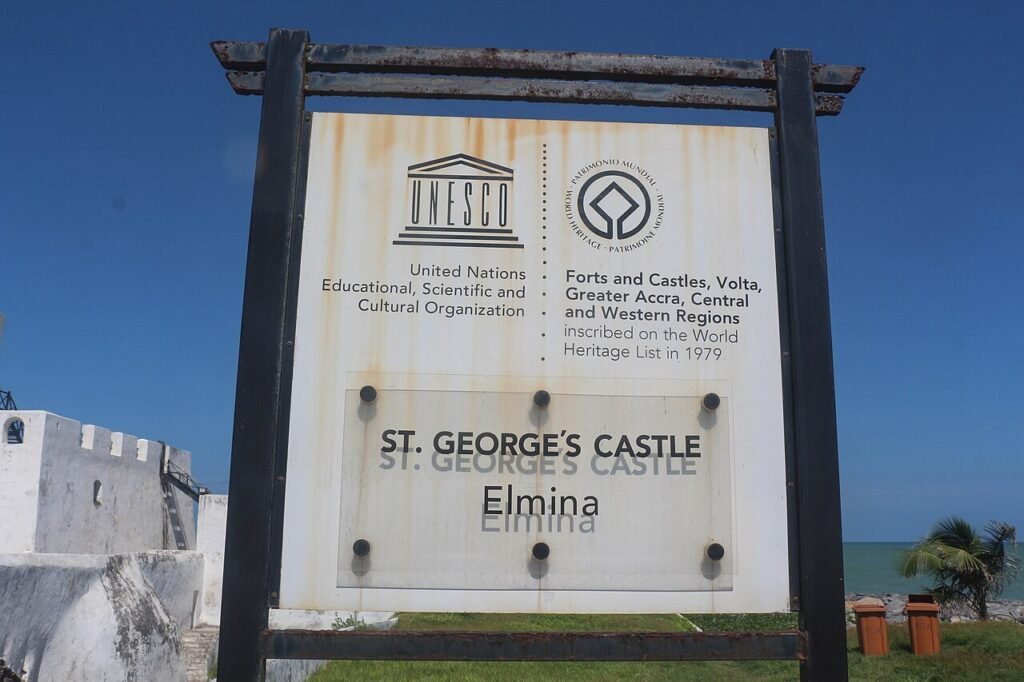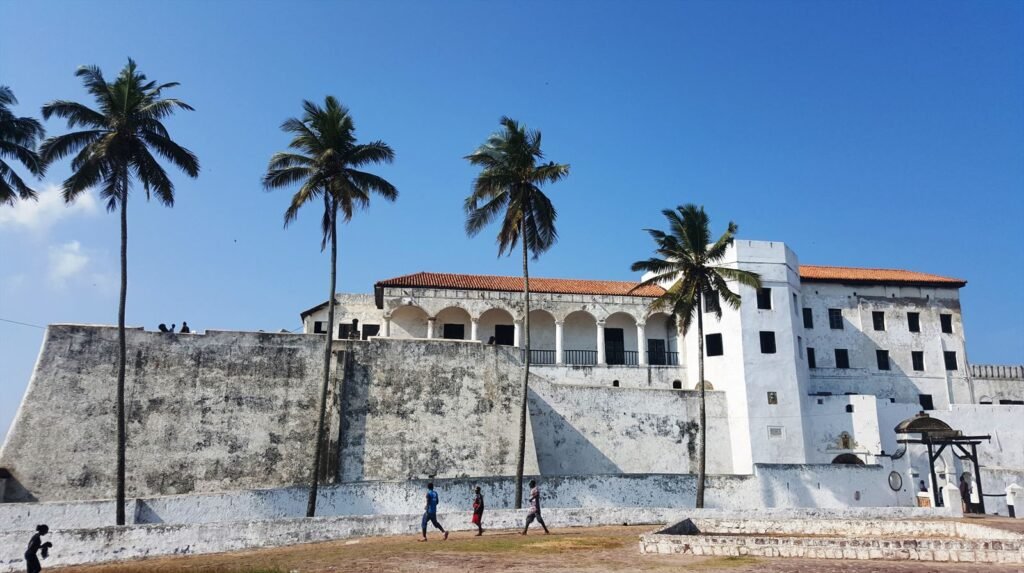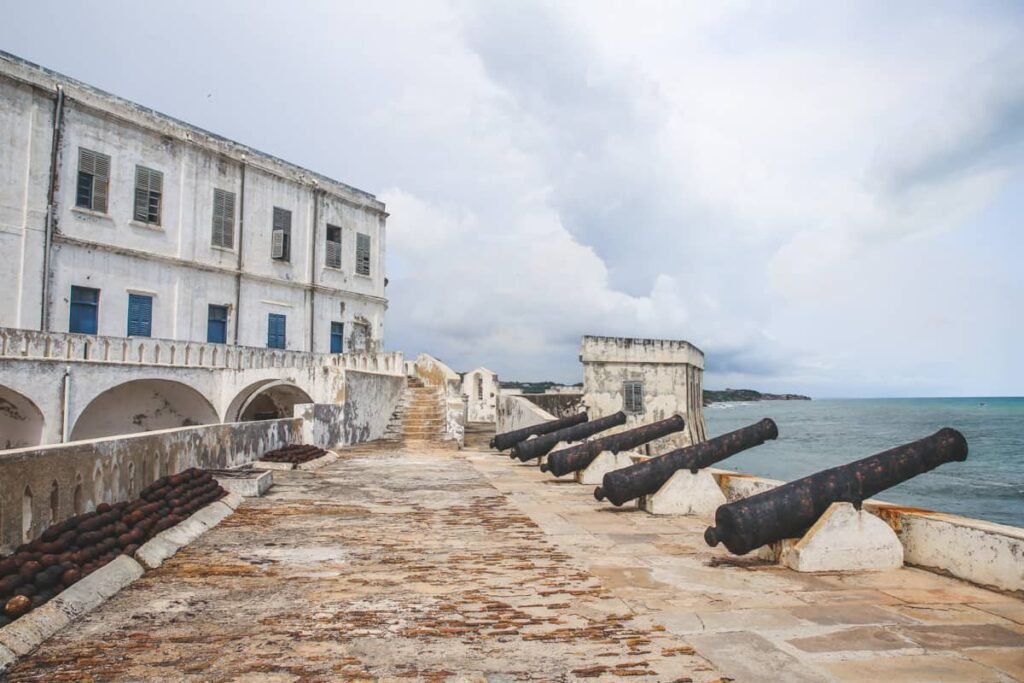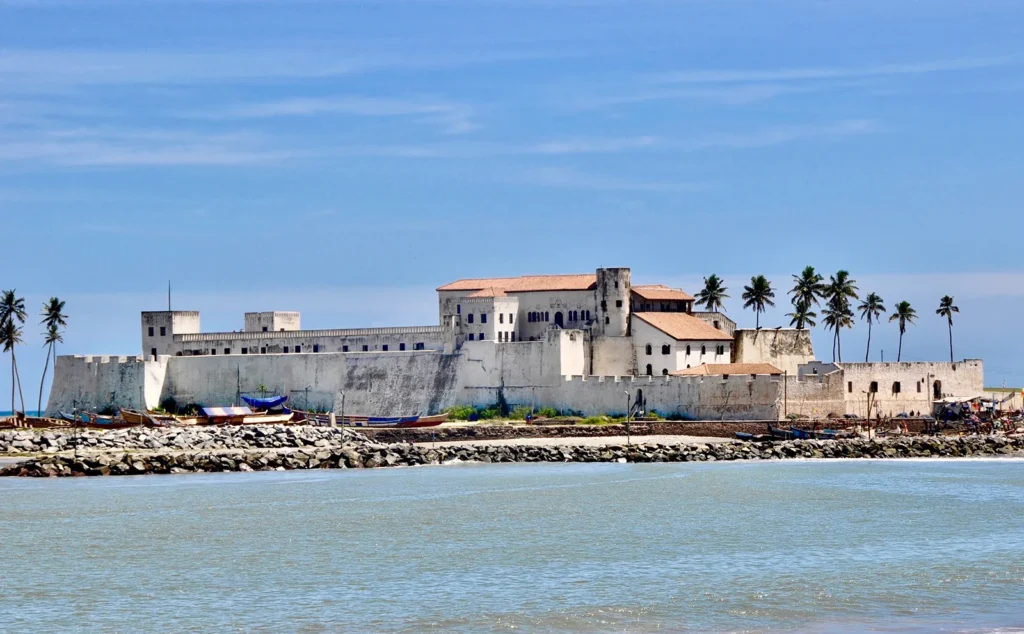St. George’s Castle, situated in Elmina, a coastal town in the Central Region of Ghana, is one of the most prominent historical landmarks in sub-Saharan Africa. Built by the Portuguese in 1482, this architectural marvel stands as the first major European construction in tropical Africa and the oldest European building in existence in the region. Its significance extends beyond its structure, as it represents a complex legacy of trade, colonization, and the transatlantic slave trade that shaped the history of both Africa and Europe.

Portuguese Foundations: A Gateway to Gold
The Portuguese navigators, in search of new trade routes and resources, selected the site for St. George’s Castle with strategic precision. Located at the end of a narrow promontory between the Atlantic Ocean and the Benya River, the castle’s position offered natural protection and access to a safe harbour, crucial for maritime trade. Named ‘Sao Jorge da Mina’ after the patron saint of Portugal, the castle became the cornerstone of Portuguese influence in the region.
The Portuguese established a trade monopoly, particularly focusing on the rich gold deposits of the area. Elmina itself derives its name from the Portuguese word for “mine,” reflecting the town’s historical significance as a hub for gold extraction and export. For several decades, St. George’s Castle facilitated the exchange of European goods for gold, ivory, and other valuable resources. However, as the volume of trade increased, the Portuguese faced labour shortages, leading to a grim shift in their activities.

The Slave Trade and Economic Downfall
In the early 16th century, the Portuguese began importing enslaved people from Benin, using them as a means of facilitating trade in gold and ivory. This marked the beginning of the castle’s involvement in the transatlantic slave trade, a practice that would expand under subsequent European powers. The Portuguese economic dominance in Elmina began to wane in the early 17th century when the influx of gold from Mexico caused a dramatic fall in European gold prices. This economic instability made it easier for rival European powers to challenge Portuguese control.
In 1637, the Dutch successfully ousted the Portuguese and took control of St. George’s Castle. They continued the gold and slave trades, but with renewed vigour. The Dutch rebuilt and expanded the castle between 1770 and 1775, turning it into the central administrative headquarters of their West Indies Company on the Gold Coast.

The Dutch Era: Power and Prestige
During the Dutch occupation, St. George’s Castle remained a symbol of European power on the West African coast. In 1682, Jean Barbot, a French explorer, and writer, famously described the castle as unmatched in beauty and strength along the entire coastline of Guinea. Its thick stone walls and commanding presence symbolized the Dutch’s dominance in the region’s gold and slave trades. The castle’s dungeons, however, bore witness to the horrors of the slave trade, as thousands of enslaved Africans were held there before being shipped across the Atlantic.
St. George’s Castle continued under Dutch control until 1872, when the British took over the Dutch Gold Coast, marking the end of Dutch influence in the area. Under British rule, the castle’s role in the transatlantic slave trade diminished, but its presence as a historical and strategic site remained.

Transition and Historical Preservation
After the British assumed control of the castle in 1872, it transitioned through various uses, reflecting the changing tides of Ghanaian society. The structure housed a Police Recruit Training Centre and later served as a secondary school. Today, St. George’s Castle has been transformed into a historical museum and is recognized globally for its historical importance, featuring prominently on UNESCO’s World Heritage List.
The legacy of St. George’s Castle is both remarkable and somber. While its architectural grandeur and historical significance make it one of the most visited attractions in Ghana, the castle also serves as a stark reminder of the human cost of the European colonization of Africa. Its dungeons, where enslaved Africans were once imprisoned, now stand as a memorial to the victims of the transatlantic slave trade.

Elmina: A Town Steeped in History
The town of Elmina itself is a picturesque coastal settlement, known not only for the castle but also for its vibrant fishing harbour and surrounding historical sites. Fort Coenraadsburg (St. Jago), located near St. George’s Castle, along with the Dutch cemetery and the Posuban shrines of Elmina, adds to the town’s rich historical landscape. These sites, together with the castle, draw visitors from around the world who seek to understand the complex history of trade, colonization, and resistance in the region.




